Posted up at The Inn at Bay Fortune for the evening. The night is young yet; I leverage the late afternoon sunshine to sketch and drink a Negroni.
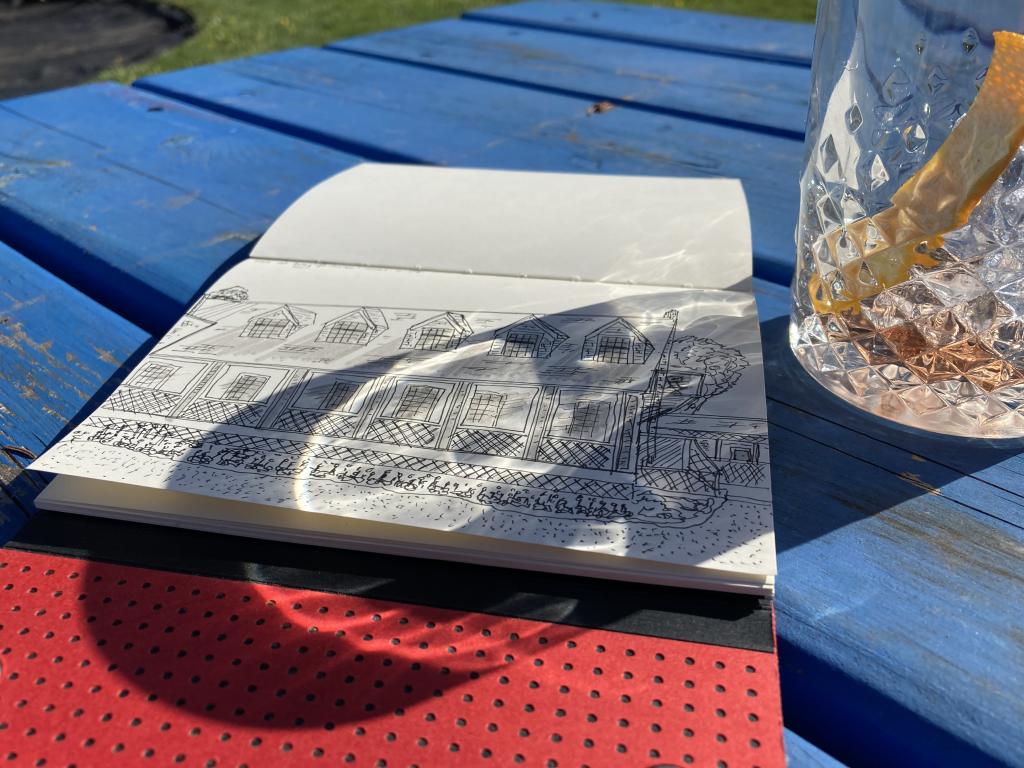
A montage of appearances by Meg Parsont on Late Night with David Letterman. Parsont worked on the 13th floor of the office building across from the Late Night offices in Rockefeller Center, and Letterman would call her up from time to time to chat, live on the air. She was the perfect foil.
Due reasons of proximity to our family doctor and loyalty to a locally-owned pharmacy, we have our prescriptions filled at Murphy’s Parkdale Pharmacy.
Murphy’s is nominally a member of the Guardian pharmacy group, and through that connection it supports using the Diem mobile app for requesting prescription refills.
It turns out that rather than a bona fide end to end digital system, requesting a refill sends a fax to the pharmacy.
On the other end of the equation, when renewals expire and the prescribing doctor needs to update the prescription, the pharmacy sends a request to the doctor. This request is sent by fax.
It’s remarkable that a mission-critical system is built on an ancient technology that amounts to a telephone-based network of remote printers. We once talked about building an online pizza ordering system using the same setup, but that was in 1995.
In my case, this creaky retro tech was exacerbated by the pharmacy having the wrong fax number for our doctor in their system, and so repeated faxes requesting approval for renewal went undelivered. But nobody knew that, because faxes.
I didn’t know that until today, though.
Last night I used the app to request a renewal, and everything went through without issue, but when I arrived at the pharmacy to pick it up this afternoon, it was nowhere to be found. While the pharmacy clerk was looking into the issue, one of their colleagues called me to tell me the prescription had expired and couldn’t be refilled.
The prescribing doctor is out until next week. Our family doctor’s office is closed. What to do? Fortunately the pharmacist had the discretion to issue a “continuing care” supply to keep me going.
On the occasion of its 70th anniversary, Thelma Phillips writes Stewart Memorial Hospital a love letter.
Last summer, once the lockdown was over and it was permitted to hold small face to face meetings, I went to my first meeting of a non-profit board I sit on.
I arrived second to last, and found that those who’d arrived ahead of me had removed their masks. This made me uncomfortable, but so as to not be an outlier, I removed my mask too.
A few minutes after I arrived, our final board member arrived, a long-serving and much-respected board member, and he kept his mask on for the entire meeting, thus normalizing something I previously regarded as aberrant.
Needless to say, I kept my mask on for the next meeting and those that followed.
Bill is an avid cyclist in our neighbourhood. He cycles year round, and has a well-worn through the rabbit warren of downtown streets. Often he’ll stop to chat when our paths cross. And he’s always wearing a high-vis vest when he rides.
It had never occurred to me to wear a high-vis vest while bicycling, but that it made Bill so much more visible won me over. And so when I go to get groceries in the evening on my bike, now I wear one.
Like my brave board colleague, Bill normalized something that previously seemed weird.
We get wrapped up thinking that change is hard and takes money and campaigns and social media outreach; often all it takes is one person to bravely lead the way.
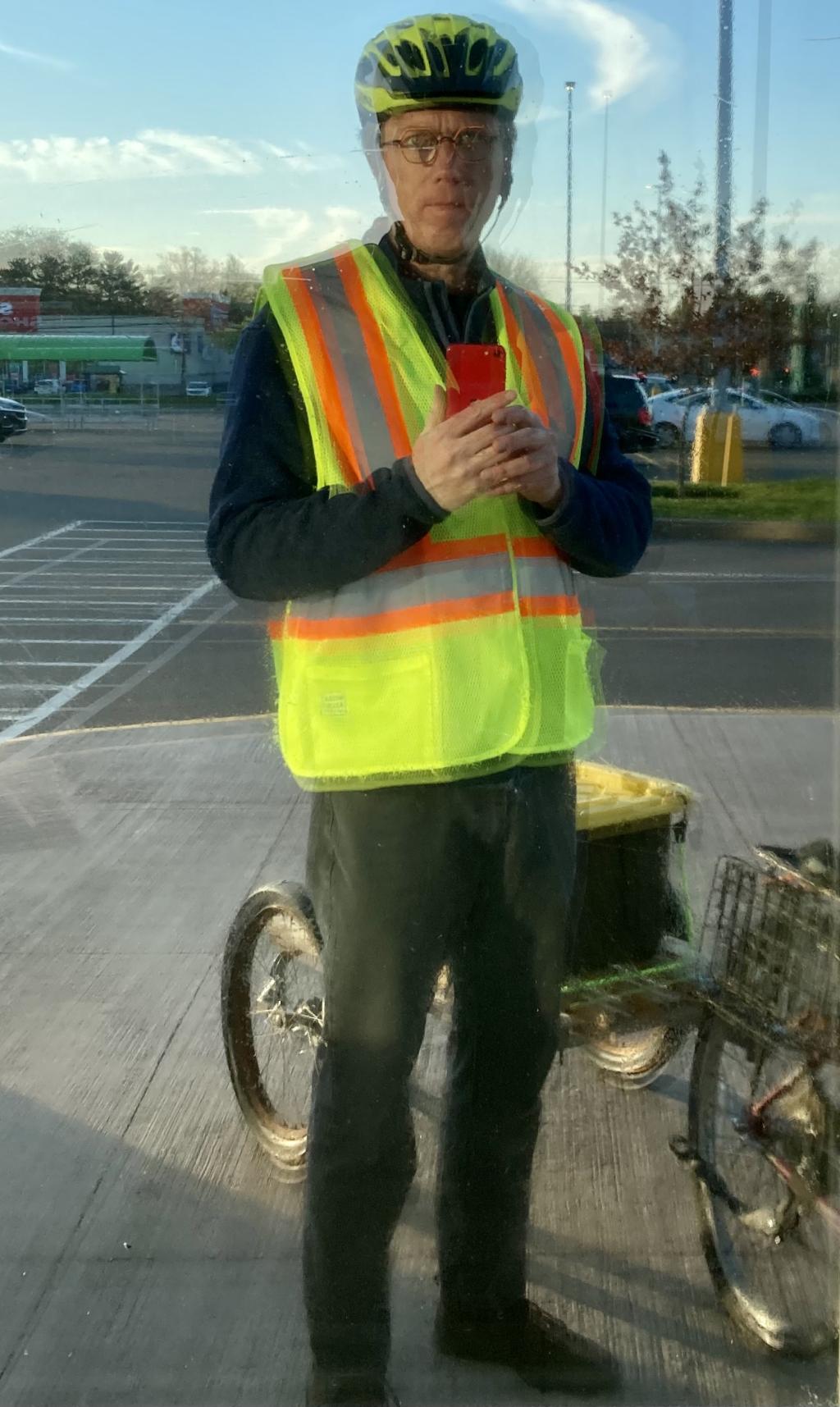
Kudos to Jeff Jenkins, Manager at Allen Street Sobeys, for having a new bicycle rack installed. It’s better, stronger, and more conveniently located than the one it replaces (which, in fact, has simply been moved to the Farm Centre side).

“Life is short,” wrote a friend in an email last week.
Typographic gears started to turn in my mind.
Which begat this.
Yellow ink with a splotch of red added in, creating an interesting shimmering effect. It’s off-putting to look at, which is the point.
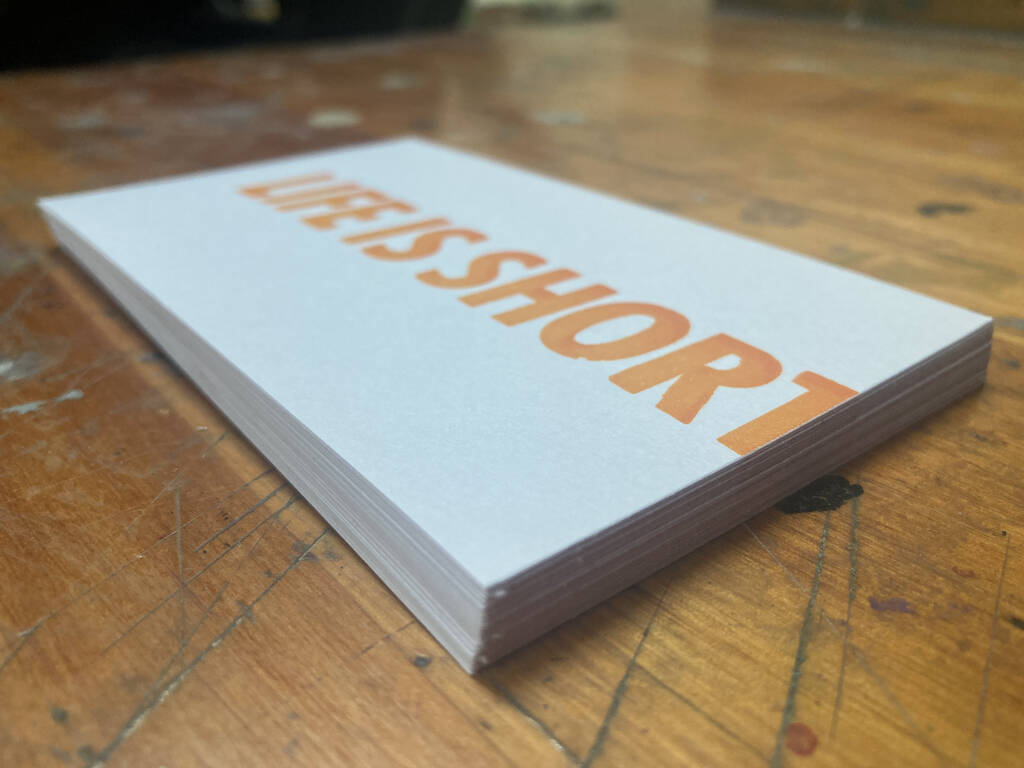
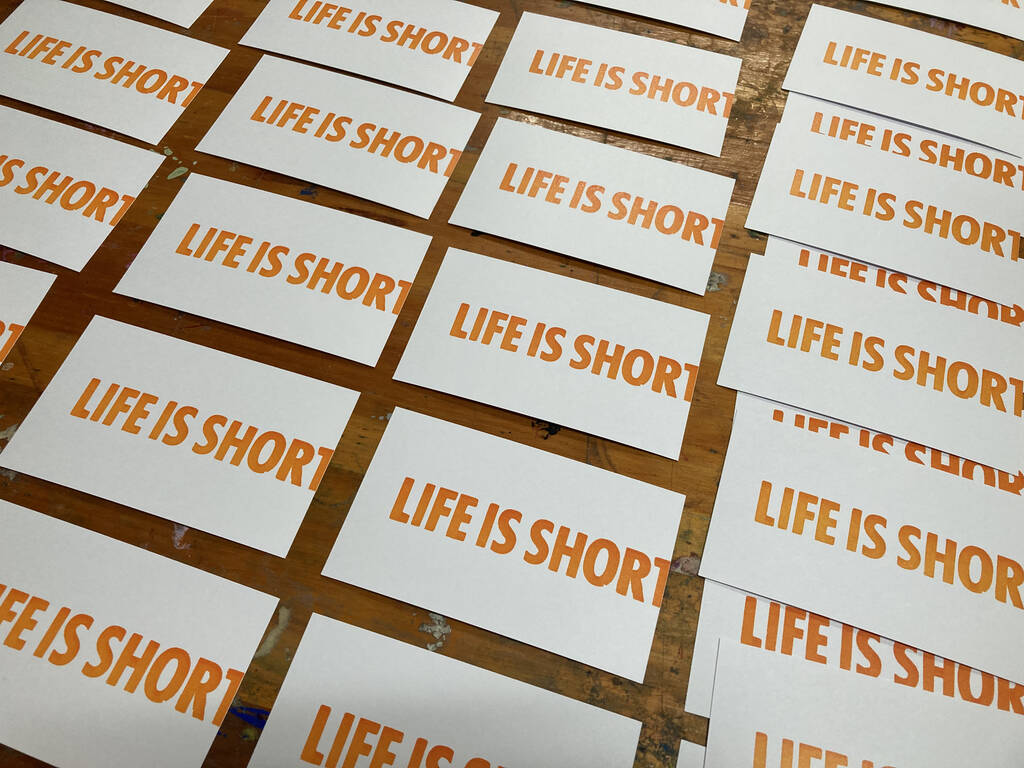
Regular readers will know that I frequently use the phrase “by times” in this space:
…and, by times, an overpowering feeling of wanting to smash my new eyeglasses with a hammer and revert to my old prescription. (from)
John was, by times, my mentor, my teacher, my landlord, my boss, my interrogator, my arch nemesis and my friend. (from)
Patient. Kind. Accepting. Calm. Generous. Daring. Colourful. Iconoclastic. Brave. Inclusive. Witty. Wise. Bossy, by times. (from)
So we stayed. Oliver took deep breaths and, by times, squeezed my hand so tight I thought it might fall off. (from)
It wasn’t until this afternoon that I learned that this is a turn of phrase strongly associated with Prince Edward Island.
From Dictionary of Prince Edward Island English:
by times
Prepositional phrase. Also spelled and pronounced betimes. Frequent generally, but infrequent in Summerside; especially rural, male.
From time to time; occasionally.‘What about Milton and Shakespeare? And the poets of the Bible? They tell me Milton could not get along with his wife, and Shakespeare was no more than respectable by times’ (MONTGOMERY, LUCY MAUD, Rainbow Valley, 1923, 77).
The day had been cloudy by times but now the sun suddenly came out and performed its usual miracle (MONTGOMERY, LUCY MAUD, A Tangled Web, [1931], 268).
Tue. 19. Warm day, I am in bed had Dr. Moyse to see me my temperature is over 102. … Sat. 23.1am up by times (CAIRNS, SCOTT,Diary:January 2—March 31, 1939, April, 1938).
But don’t think the winter days were all work and no pleasure. Apart from a bit of loneliness by times, Andy was really enjoying his new experience (WARREN, EVANGELINE, Andy the Milkman, 1957, 58).
It would get pretty cold by times but we were dressed warm and we were young and active and kept ourselves warm (CAMPBELL, FRANK, As the Fella Says …, 1983, 75).
So it seems I have internalized an infrequent-in-Summerside, rural, male part of the Island vernacular to the point where I’d simply assumed it was used the world over. By times.
Here are photos of our back yard, both taken on May 23rd, the first in 2019 and the second in 2021.
There’sa big difference in the lawn due the absence of Ethan, and a palpable difference in the leaf growth in the trees.
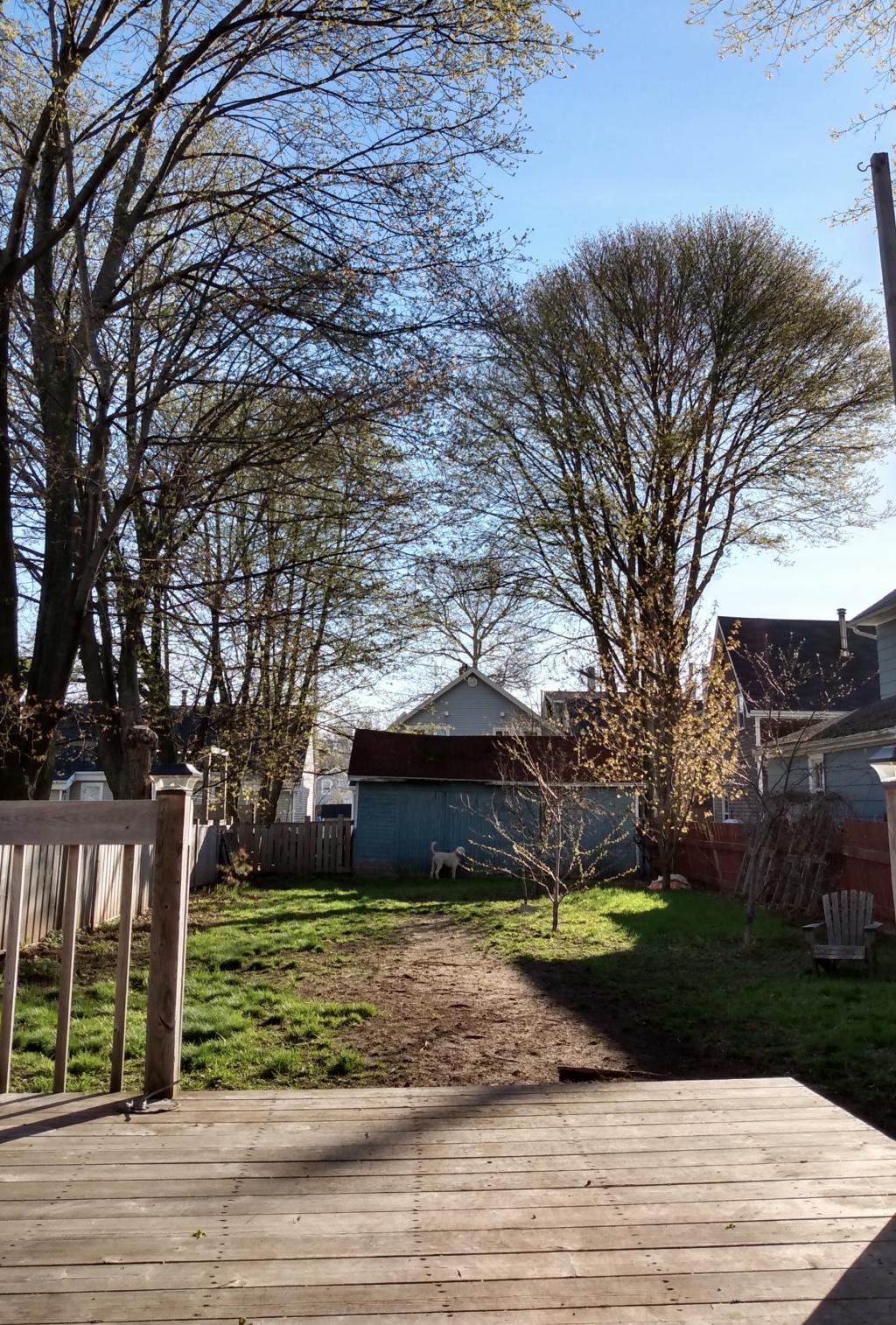 ,
, 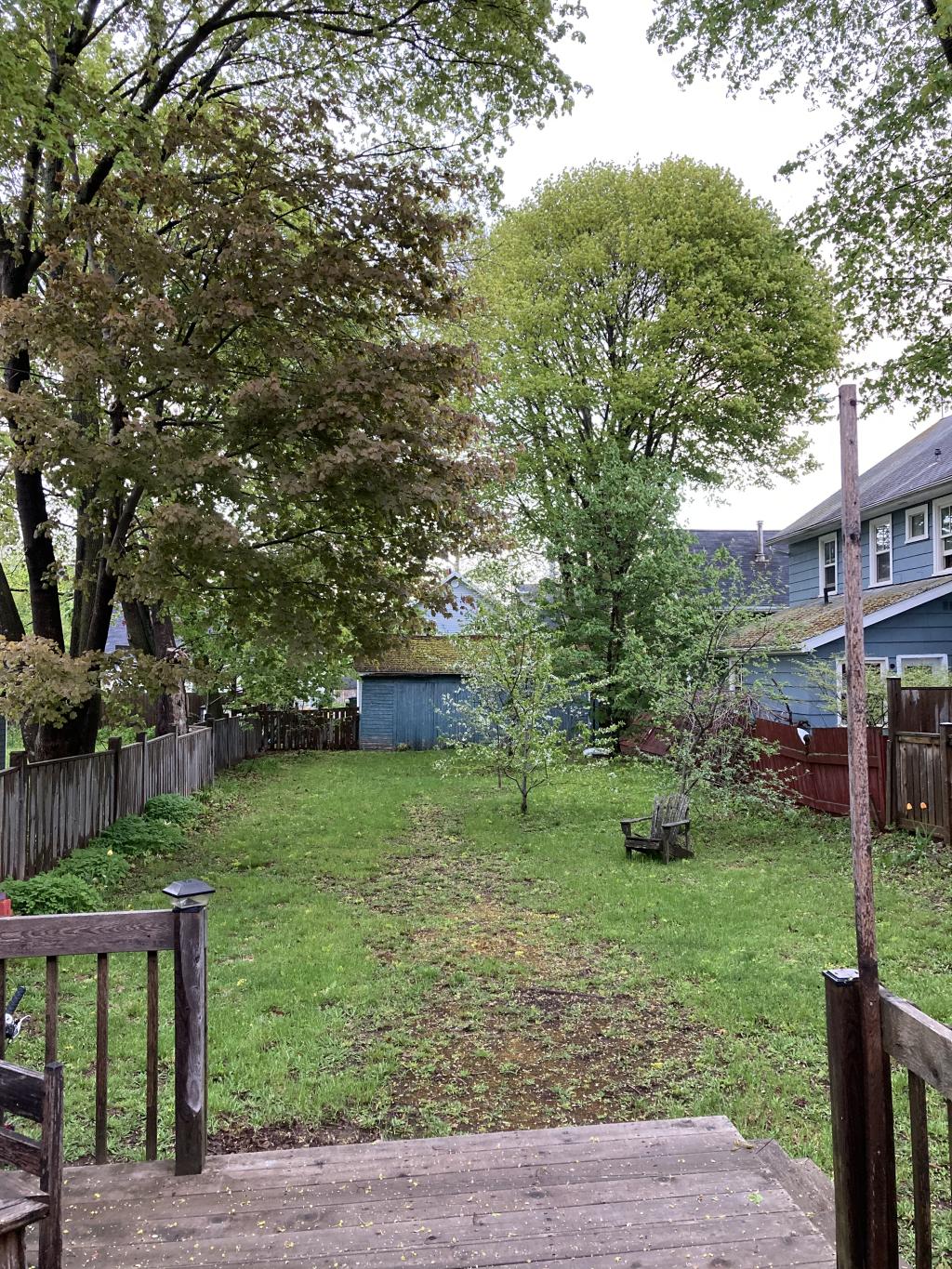
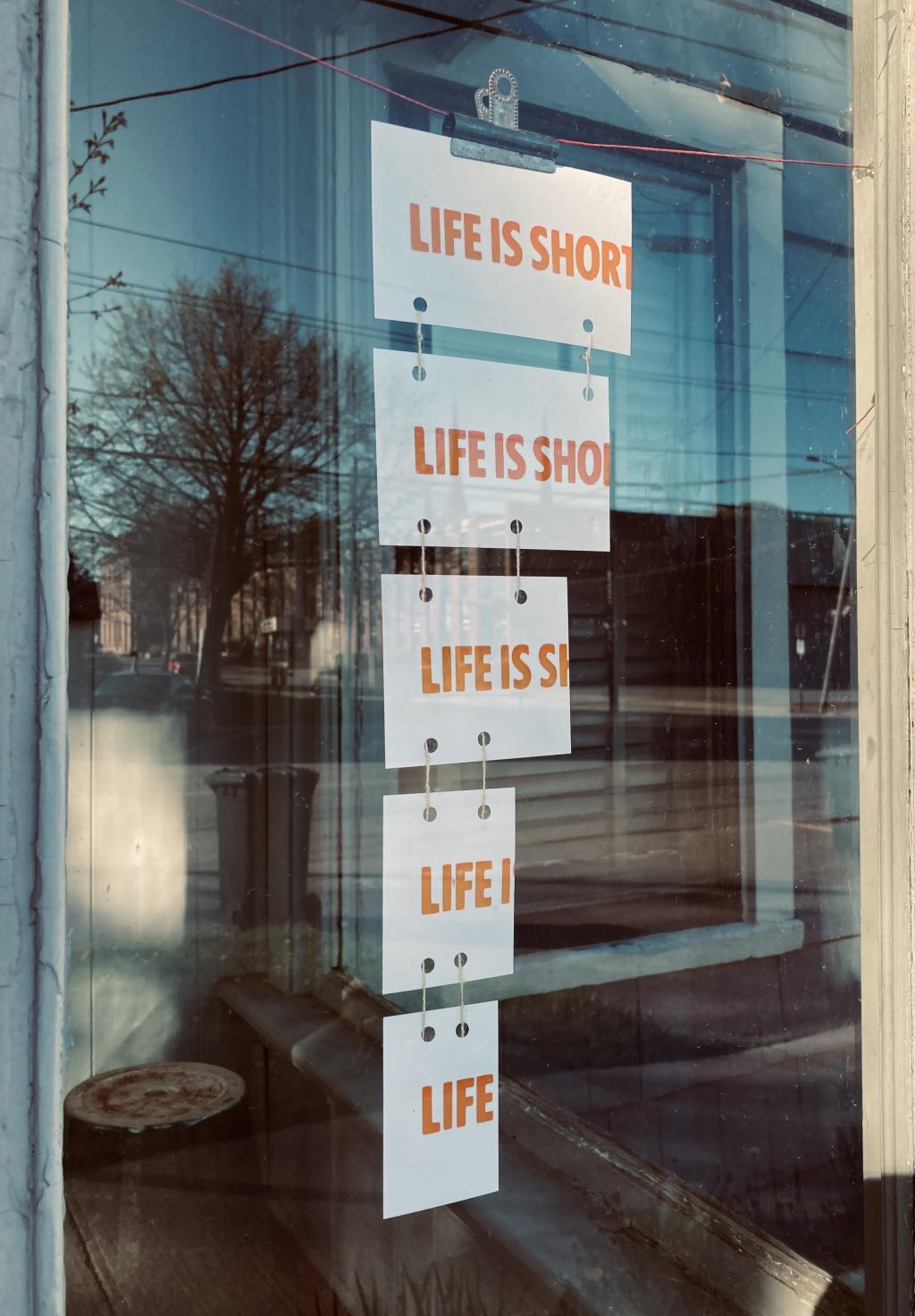
 I am
I am